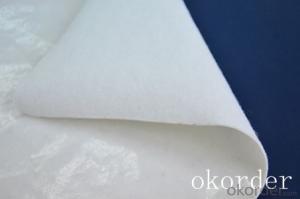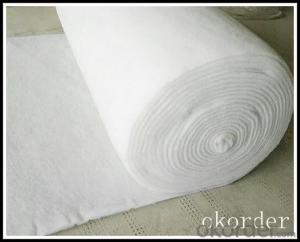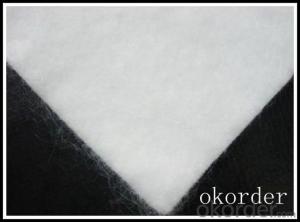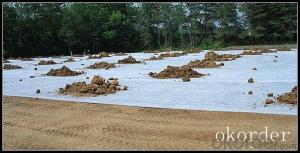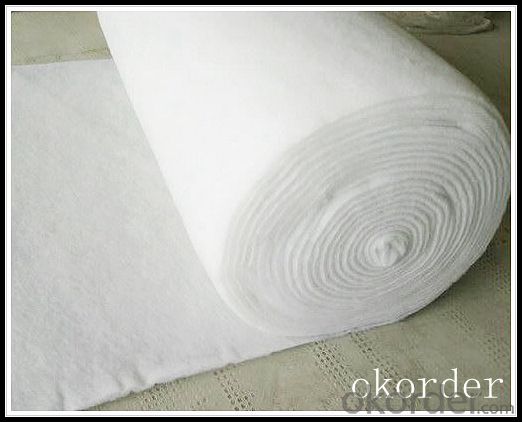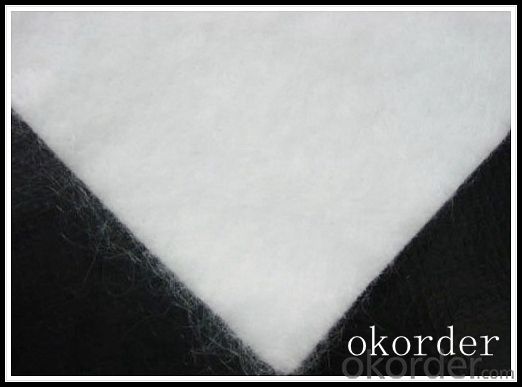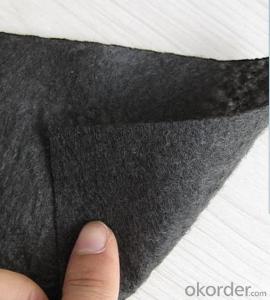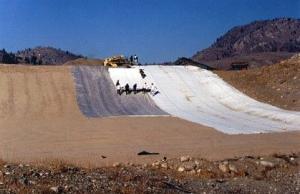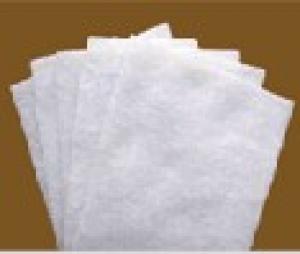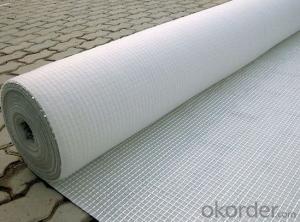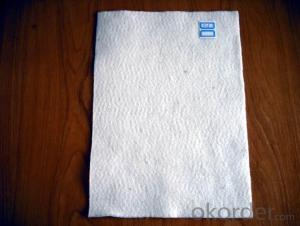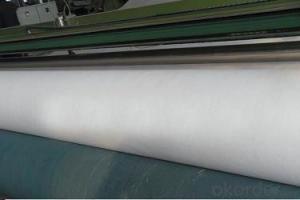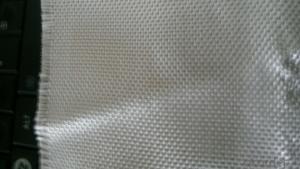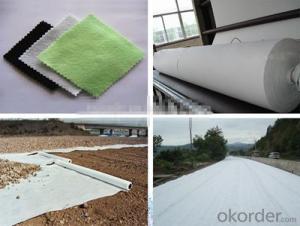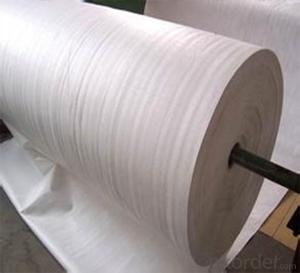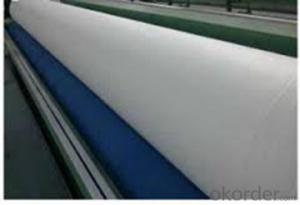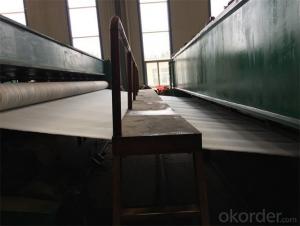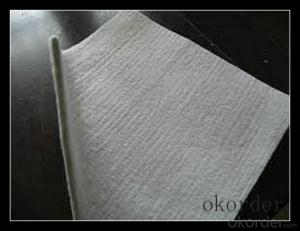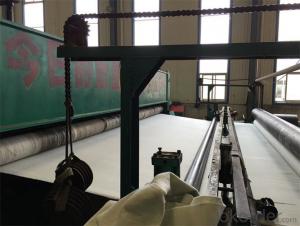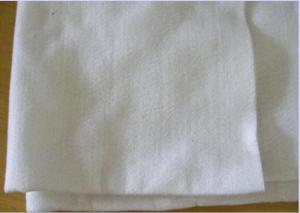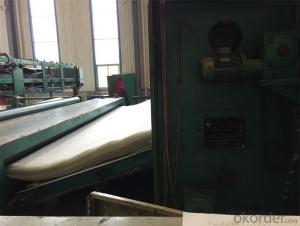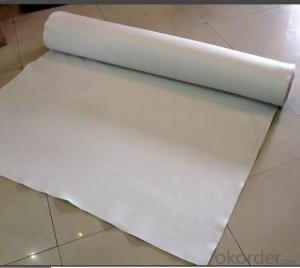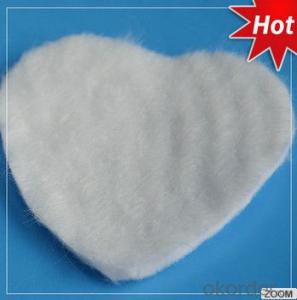Wf200 100% Polyester Filament Civil Non-Woven Geotextiles Fabric in China
- Loading Port:
- China main port
- Payment Terms:
- TT OR LC
- Min Order Qty:
- 1000 m²
- Supply Capability:
- 1000000 m²/month
OKorder Service Pledge
OKorder Financial Service
You Might Also Like
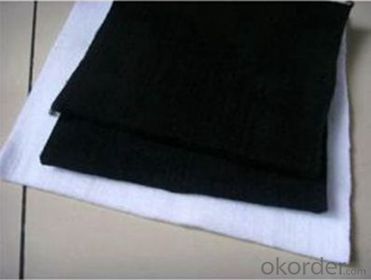
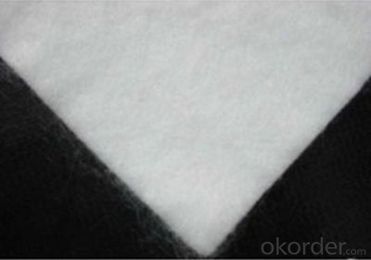
Product Introduction
Type:
Geotextiles, Nonwoven Geotextile woven Geotextile
Place of Origin:
Shandong, China (Mainland)
Brand Name:
CMAX
Model Number:
CMAX-S001
Geotextile Type:
Non-Woven Geotextiles Woven Geotextiles
Features and Benefits
Nonwoven structure, providing excellent surface friction and built-in elongation
Effective filter, with tight pore size (AOS=70) and high permittivity
High tensile strength, with excellent puncture and tear resistance
Range from 3.2 oz/sy (109g/sm) – 16.0 oz/sy (543g/sm)
Thick structure, allowing cushioning and lateral gas and liquid transmission
Assembling is possible at almost any weather conditions. There are no big difficulties while the laying out of the material due to the following features: material rolls are not big, which reduces transportation and storage costs as well as labor costs; the material does not water permeable; while application in humid conditions the roll weight does not change; it is not permeable for plant roots, is a good protection from gnawing animals; acid and alkali resistant, etc. the material exactly repeats the base molding and does not require any fixing and fastening joints.
Our Service
1.On a regular basis or as per your request,we entrust national testing agencies to conduct quality inspections
2. Strictly in accordance with the ISO9001-2008 international quality system standard,we monitor and manage the whole process throughout production,quality testing,and measurement to ensure product quality
3. For quality-related construction delay or substandard construction(except for damage or losses due to customer’s responsibility or irresistible natural disasters),we have refunding,replacement,and repair services.We will respond to customers’ feedbacks on quality issues within 24 hours.
After-sales service
1.In order to provide customers with comprehensive technical support,we will provide technical and other related information upon request in a timely manner.
2.In required,we will appoint specialized technicians to the construction site to give technical trainings to construction people,and offer technical guidance throughout the whole construction process.
3.For damage due to shipment and delivery,after we receive the complaint,we will check the issure through provided pictures and videos.If our responsibility is confirmed,we wil offer free replacement.
4.When the construction is completed,as your request,our technical staff may participate in the final acceptance.
FAQ:
Q: What kind of payments does jenor support?
A: T/T, L/C, Cash are accepted.
Q: Do you charge for the samples?
A: Accordeing to our company policy, the samples are free, we only charge the freight fee. And we will return the freight fee during the next order.
Q: Can you produce according to customers' design?
A: Sure, we are professional manufacturer, OEM and ODM are both welcome.
Q: Do you have other products?
A: Yes, please check the pictures:
- Q: How do geotextiles improve the performance of geosynthetic clay liners?
- Geotextiles improve the performance of geosynthetic clay liners by providing additional reinforcement and filtration capabilities. They act as a separation layer between the clay liner and other materials, preventing the mixing of different soil layers and enhancing the liner's stability. Geotextiles also enhance the liner's filtration properties, allowing water to pass through while preventing the migration of fine particles. This improves the overall performance and longevity of geosynthetic clay liners in various engineering and environmental applications.
- Q: Geotextile cloth how many square feet
- Geotextile laying - including the labor costs (according to geotextile specifications and laying conditions and requirements are different), material costs (specific quality requirements and thickness, are not the same ..), mechanical use costs (such as transport, sewing System, hoisting, etc.). The price is different. Sometimes the construction of our geotextile laying, the price per square meter from 9 yuan to 50 yuan range.
- Q: Can geotextiles be used for soil stabilization?
- Yes, geotextiles can be used for soil stabilization. They are commonly used to reinforce soils and prevent erosion, providing stability to slopes and embankments. Geotextiles help to distribute loads, increase soil strength, and improve drainage, making them an effective solution for soil stabilization projects.
- Q: What are the key considerations for geotextile installation in cold climates?
- Some key considerations for geotextile installation in cold climates include selecting a geotextile that is suitable for low temperatures, ensuring proper ground preparation and compaction to prevent frost heaving, using appropriate installation techniques such as anchoring or weighting the geotextile to prevent movement, and considering the potential for snow accumulation and its effects on the geotextile's performance. Additionally, monitoring and maintenance during winter months is crucial to address any potential damage caused by freezing and thawing cycles.
- Q: Does the geotextile filter cover the geotextile? Or impermeable geotextile?
- Geotextile has the role of anti-filter reinforcement, can not seepage, seepage is geomembrane, composite geotextile is also called composite geomembrane
- Q: Can geotextiles be used in subgrade stabilization?
- Yes, geotextiles can be used in subgrade stabilization. Geotextiles are commonly used in civil engineering projects to improve the strength and stability of subgrade soils. They can help distribute loads, control soil erosion, and provide reinforcement to the subgrade, resulting in enhanced stability and increased bearing capacity.
- Q: What are the key factors affecting the UV stability of geotextiles?
- The key factors affecting the UV stability of geotextiles include the polymer type, additives, and the thickness of the geotextile. The polymer type determines the inherent resistance of the geotextile to UV degradation. Additives such as UV stabilizers can enhance the UV resistance of the geotextile. Additionally, the thickness of the geotextile plays a role in its UV stability, as thicker geotextiles tend to provide better protection against UV rays.
- Q: Are geotextiles suitable for use in contaminated soil remediation projects?
- Yes, geotextiles are suitable for use in contaminated soil remediation projects. Geotextiles have been proven to be effective in separating and stabilizing soil layers, preventing soil erosion, and controlling sedimentation. They can also act as a barrier to prevent the spread of contaminants, while allowing for proper drainage and filtration. Additionally, geotextiles are durable, cost-effective, and environmentally friendly, making them a suitable choice for remediation projects.
- Q: What are the specifications for geotextiles in wastewater treatment projects?
- Geotextiles used in wastewater treatment projects typically have specific specifications related to their weight, permeability, and durability. These specifications ensure that the geotextiles are capable of providing effective filtration, separation, and reinforcement functions in the wastewater treatment process. Additionally, they are designed to withstand the harsh conditions and chemicals present in wastewater treatment facilities.
- Q: What is geotextile, what role
- Geotextile is a new type of building materials, raw materials are polyester, acrylic, nylon and other polymer polymer synthetic fiber. In accordance with the manufacturing method is divided into: there are two types of geotextile and non-woven geotextile. Geotextile with anti-seepage, anti-filtration, drainage, isolation, reinforcement, protection, sealing and other functions, it with the conventional masonry and concrete material seepage effect compared to a low investment, simple construction process, short duration Infiltration effect is good, the channel effective use of high coefficient. Water conservancy engineering dams and slope protection filter, channel isolation, seepage control; road, railway, airport runway foundation isolation, filter, drainage, slope, retaining wall and road reinforcement, drainage; , Geotextile has been widely used in the field of infrastructure construction, and has been gradually applied in the field of infrastructure construction, and the use of geotextile In a wider area.
Send your message to us
Wf200 100% Polyester Filament Civil Non-Woven Geotextiles Fabric in China
- Loading Port:
- China main port
- Payment Terms:
- TT OR LC
- Min Order Qty:
- 1000 m²
- Supply Capability:
- 1000000 m²/month
OKorder Service Pledge
OKorder Financial Service
Similar products
Hot products
Hot Searches
Related keywords
